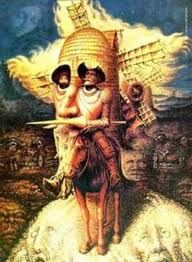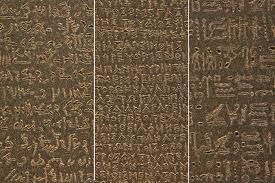Cross posted from The Stars Hollow Gazette
This is your morning Open Thread. Pour your favorite beverage and review the past and comment on the future.
Find the past “On This Day in History” here.
October 7 is the 280th day of the year (281st in leap years) in the Gregorian calendar. There are 85 days remaining until the end of the year.
On this day in 1955, Beat poet, Allen Ginsberg reads his poem “Howl” at a poetry reading at Six Gallery in San Francisco.
Irwin Allen Ginsberg (June 3, 1926 – April 5, 1997) was an American poet who vigorously opposed militarism, materialism and sexual repression. In the 1950s, Ginsberg was a leading figure of the Beat Generation, an anarchic group of young men and women who joined poetry, song, sex, wine and illicit drugs with passionate political ideas that championed personal freedoms. Ginsberg’s epic poem Howl, in which he celebrates his fellow “angel-headed hipsters” and excoriates what he saw as the destructive forces of capitalism and conformity in the United States, is one of the classic poems of the Beat Generation The poem, dedicated to writer Carl Solomon, has a memorable opening:
I saw the best minds of my generation destroyed by
madness, starving hysterical naked,
dragging themselves through the negro streets at dawn
looking for an angry fix…In October 1955, Ginsberg and five other unknown poets gave a free reading at an experimental art gallery in San Francisco. Ginsberg’s Howl electrified the audience. According to fellow poet Michael McClure, it was clear “that a barrier had been broken, that a human voice and body had been hurled against the harsh wall of America and its supporting armies and navies and academies and institutions and ownership systems and power support bases.” In 1957, Howl attracted widespread publicity when it became the subject of an obscenity trial in which a San Francisco prosecutor argued it contained “filthy, vulgar, obscene, and disgusting language.” The poem seemed especially outrageous in 1950s America because it depicted both heterosexual and homosexual sex at a time when sodomy laws made homosexual acts a crime in every U.S. state. Howl reflected Ginsberg’s own bisexuality and his homosexual relationships with a number of men, including Peter Orlovsky, his lifelong partner. Judge Clayton W. Horn ruled that Howl was not obscene, adding, “Would there be any freedom of press or speech if one must reduce his vocabulary to vapid innocuous euphemisms?”
In Howl and in his other poetry, Ginsberg drew inspiration from the epic, free verse style of the 19th century American poet Walt Whitman. Both wrote passionately about the promise (and betrayal) of American democracy; the central importance of erotic experience; and the spiritual quest for the truth of everyday existence. J. D. McClatchy, editor of the Yale Review called Ginsberg “the best-known American poet of his generation, as much a social force as a literary phenomenon.” McClatchy added that Ginsberg, like Whitman, “was a bard in the old manner – outsized, darkly prophetic, part exuberance, part prayer, part rant. His work is finally a history of our era’s psyche, with all its contradictory urges.”
Ginsberg was a practicing Buddhist who studied Eastern religious disciplines extensively. One of his most influential teachers was the Tibetan Buddhist, the Venerable Chögyam Trungpa, founder of the Naropa Institute, now Naropa University at Boulder, Colorado. At Trungpa’s urging, Ginsberg and poet Anne Waldman started a poetry school there in 1974 which they called the “Jack Kerouac School of Disembodied Poetics”. In spite of his attraction to Eastern religions, the journalist Jane Kramer argues that Ginsberg, like Whitman, adhered to an “American brand of mysticism” that was, in her words, “rooted in humanism and in a romantic and visionary ideal of harmony among men.” Ginsberg’s political activism was consistent with his religious beliefs. He took part in decades of non-violent political protest against everything from the Vietnam War to the War on Drugs. The literary critic, Helen Vendler, described Ginsberg as “tirelessly persistent in protesting censorship, imperial politics, and persecution of the powerless.” His achievements as a writer as well as his notoriety as an activist gained him honors from established institutions. Ginsberg’s book of poems, The Fall of America, won the National Book Award for poetry in 1974. Other honors included the National Arts Club gold medal and his induction into the American Academy and Institute of Arts and Letters, both in 1979. In 1995, Ginsberg won a Pulitzer Prize for his book, Cosmopolitan Greetings: Poems 1986-1992.

 The first feature-length motion picture with synchronized dialogue sequences, its release heralded the commercial ascendance of the “talkies” and the decline of the silent film era. Produced by Warner Bros. with its Vitaphone sound-on-disc system, the movie stars Al Jolson, who performs six songs. Directed by Alan Crosland, it is based on a play by Samson Raphaelson.
The first feature-length motion picture with synchronized dialogue sequences, its release heralded the commercial ascendance of the “talkies” and the decline of the silent film era. Produced by Warner Bros. with its Vitaphone sound-on-disc system, the movie stars Al Jolson, who performs six songs. Directed by Alan Crosland, it is based on a play by Samson Raphaelson.
 The Orient Express is the name of a long-distance passenger train, the route for which has changed considerably in modern times. The first run of The Orient Express was on 4 October 1883. The train travelled from Paris to Giurgiu in Romania, via Munich and Vienna. At Giurgiu, passengers were ferried across the Danube to Ruse in Bulgaria to pick up another train to Varna. From here they completed their journey to Istanbul by ferry.
The Orient Express is the name of a long-distance passenger train, the route for which has changed considerably in modern times. The first run of The Orient Express was on 4 October 1883. The train travelled from Paris to Giurgiu in Romania, via Munich and Vienna. At Giurgiu, passengers were ferried across the Danube to Ruse in Bulgaria to pick up another train to Varna. From here they completed their journey to Istanbul by ferry. In 1963, Bob Dylan was asked by the authors of a forthcoming book on Woody Guthrie to contribute a 25-word comment summarizing his thoughts on the man who had probably been his greatest formative influence. Dylan responded instead with a 194-line poem called
In 1963, Bob Dylan was asked by the authors of a forthcoming book on Woody Guthrie to contribute a 25-word comment summarizing his thoughts on the man who had probably been his greatest formative influence. Dylan responded instead with a 194-line poem called  The Twilight Zone is an American anthology television series created by
The Twilight Zone is an American anthology television series created by 


 Thomas Young was one of the first to attempt decipherment of the Egyptian hieroglyphs, basing his own work on the investigations of Swedish diplomat Akerblad, who built up a demotic alphabet of 29 letters (15 turned out to be correct) and translated all personal names and other words in the Demotic part of the Rosetta Stone in 1802. Akerblad however, wrongly believed that demotic was entirely phonetic or alphabetic. Young thought the same, and by 1814 he had completely translated the enchorial (which Champollion labeled Demotic as it is called today) text of the Rosetta Stone (he had a list with 86 demotic words). Young then studied the hieroglyphic alphabet and made some progress but failed to recognise that demotic and hieroglyphic texts were paraphrases and not simple translations. In 1823 he published an Account of the Recent Discoveries in Hieroglyphic Literature and Egyptian Antiquities. Some of Young’s conclusions appeared in the famous article Egypt he wrote for the 1818 edition of the Encyclopædia Britannica.
Thomas Young was one of the first to attempt decipherment of the Egyptian hieroglyphs, basing his own work on the investigations of Swedish diplomat Akerblad, who built up a demotic alphabet of 29 letters (15 turned out to be correct) and translated all personal names and other words in the Demotic part of the Rosetta Stone in 1802. Akerblad however, wrongly believed that demotic was entirely phonetic or alphabetic. Young thought the same, and by 1814 he had completely translated the enchorial (which Champollion labeled Demotic as it is called today) text of the Rosetta Stone (he had a list with 86 demotic words). Young then studied the hieroglyphic alphabet and made some progress but failed to recognise that demotic and hieroglyphic texts were paraphrases and not simple translations. In 1823 he published an Account of the Recent Discoveries in Hieroglyphic Literature and Egyptian Antiquities. Some of Young’s conclusions appeared in the famous article Egypt he wrote for the 1818 edition of the Encyclopædia Britannica.